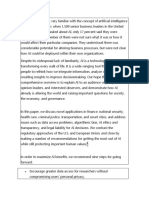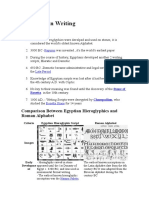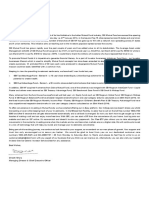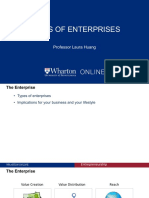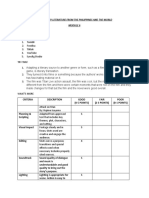0% found this document useful (0 votes)
16 views24 pagesDesert Mirages
Artificial intelligence (AI) is projected to significantly impact the global economy, with Saudi Arabia expected to contribute $135 billion by 2030. The integration of AI into the Kingdom's government can enhance public services, increase productivity, and improve policymaking through data-driven insights. Establishing a government nerve center could facilitate real-time data analysis and collaboration across agencies, ultimately fostering innovation and addressing national priorities.
Uploaded by
Mohamad ChahineCopyright
© © All Rights Reserved
We take content rights seriously. If you suspect this is your content, claim it here.
Available Formats
Download as PDF, TXT or read online on Scribd
0% found this document useful (0 votes)
16 views24 pagesDesert Mirages
Artificial intelligence (AI) is projected to significantly impact the global economy, with Saudi Arabia expected to contribute $135 billion by 2030. The integration of AI into the Kingdom's government can enhance public services, increase productivity, and improve policymaking through data-driven insights. Establishing a government nerve center could facilitate real-time data analysis and collaboration across agencies, ultimately fostering innovation and addressing national priorities.
Uploaded by
Mohamad ChahineCopyright
© © All Rights Reserved
We take content rights seriously. If you suspect this is your content, claim it here.
Available Formats
Download as PDF, TXT or read online on Scribd
/ 24










